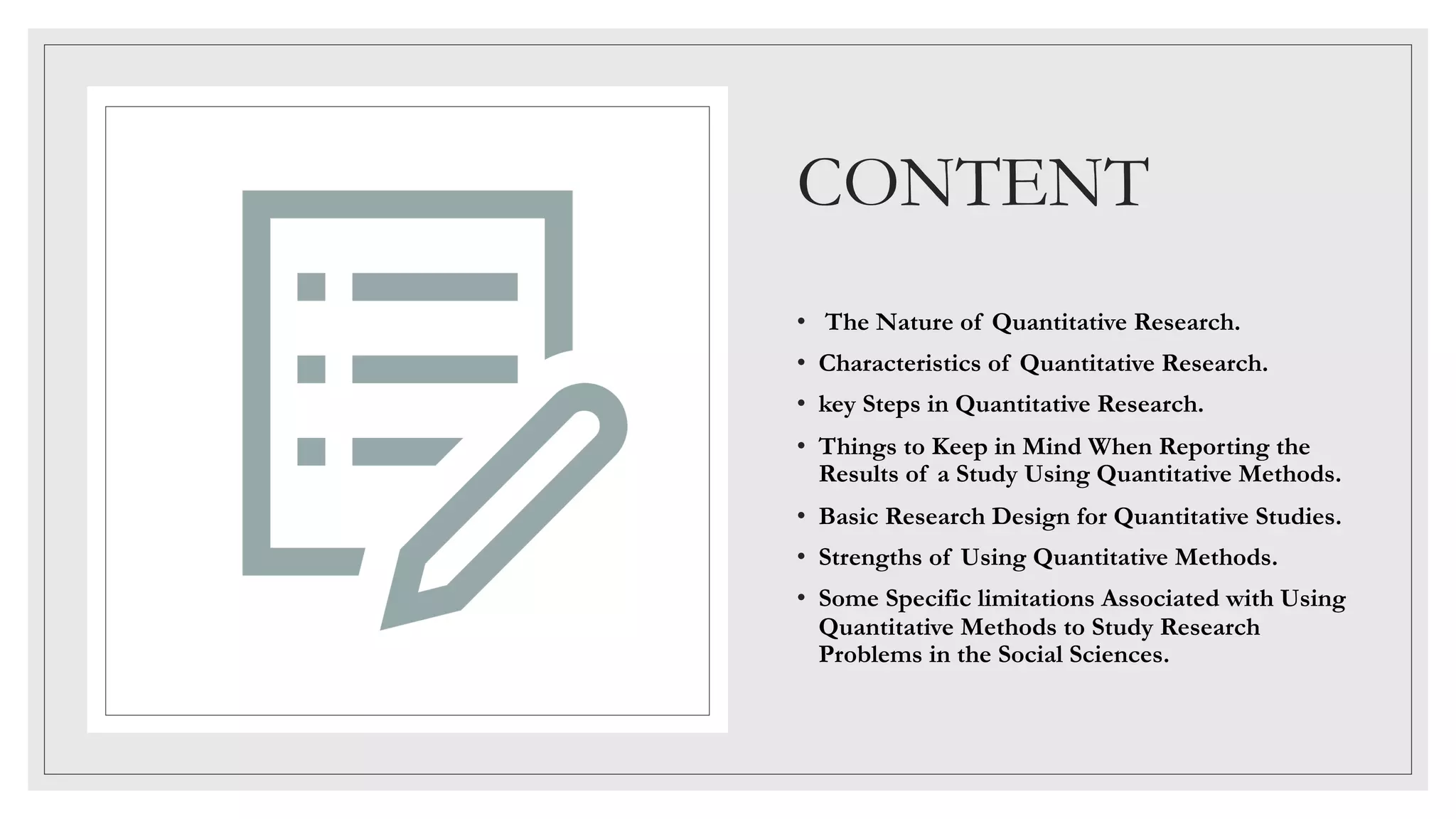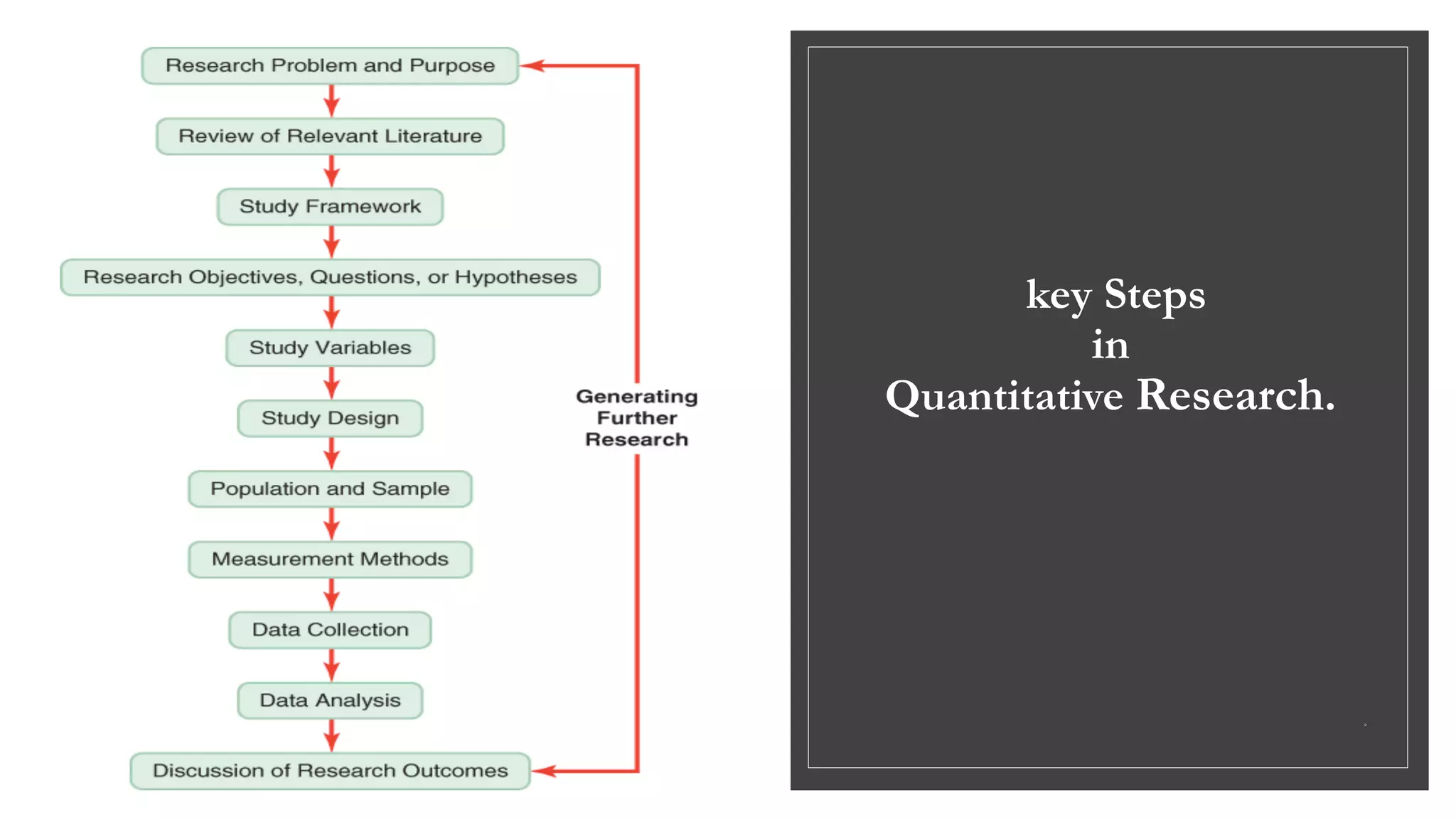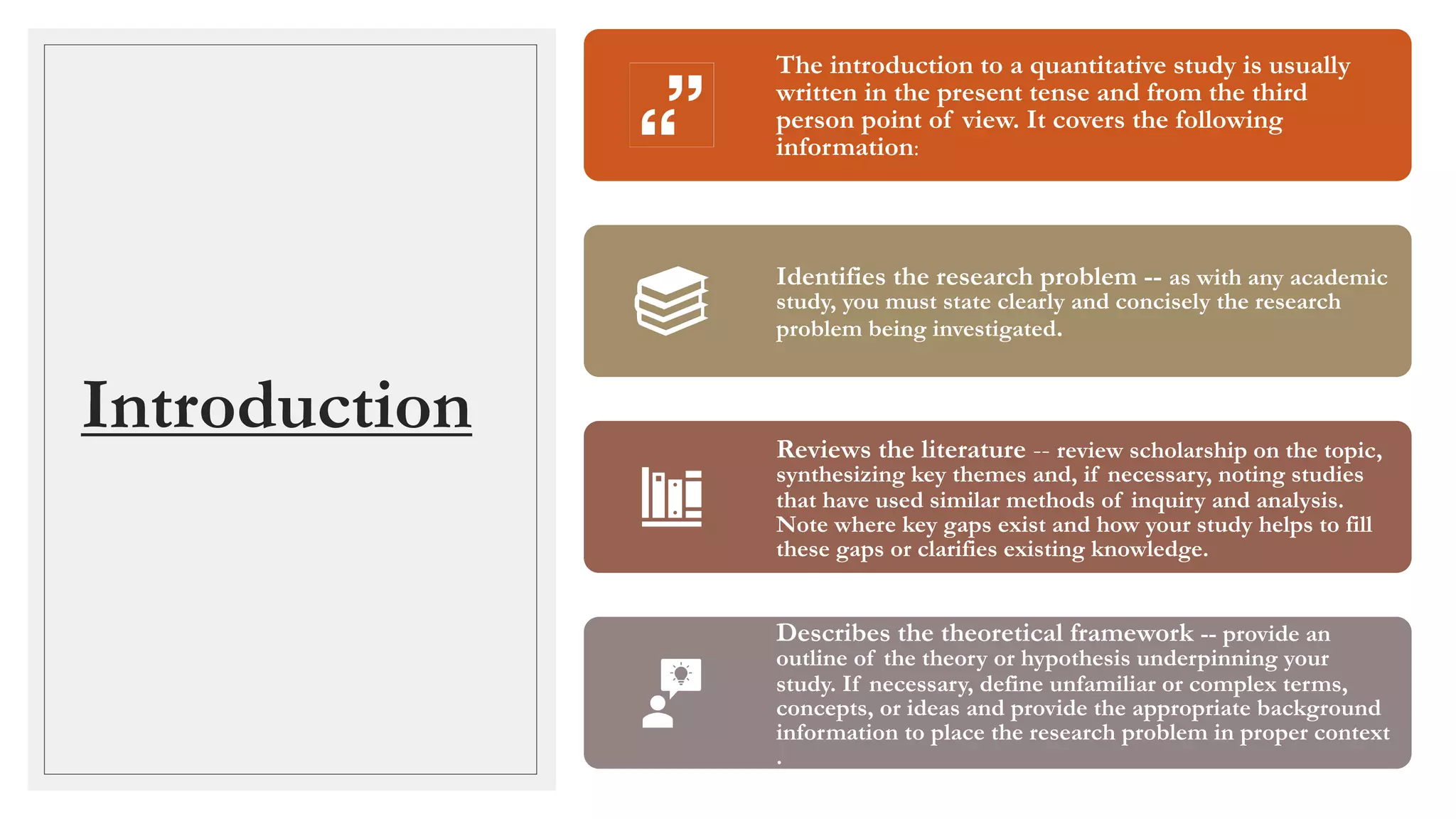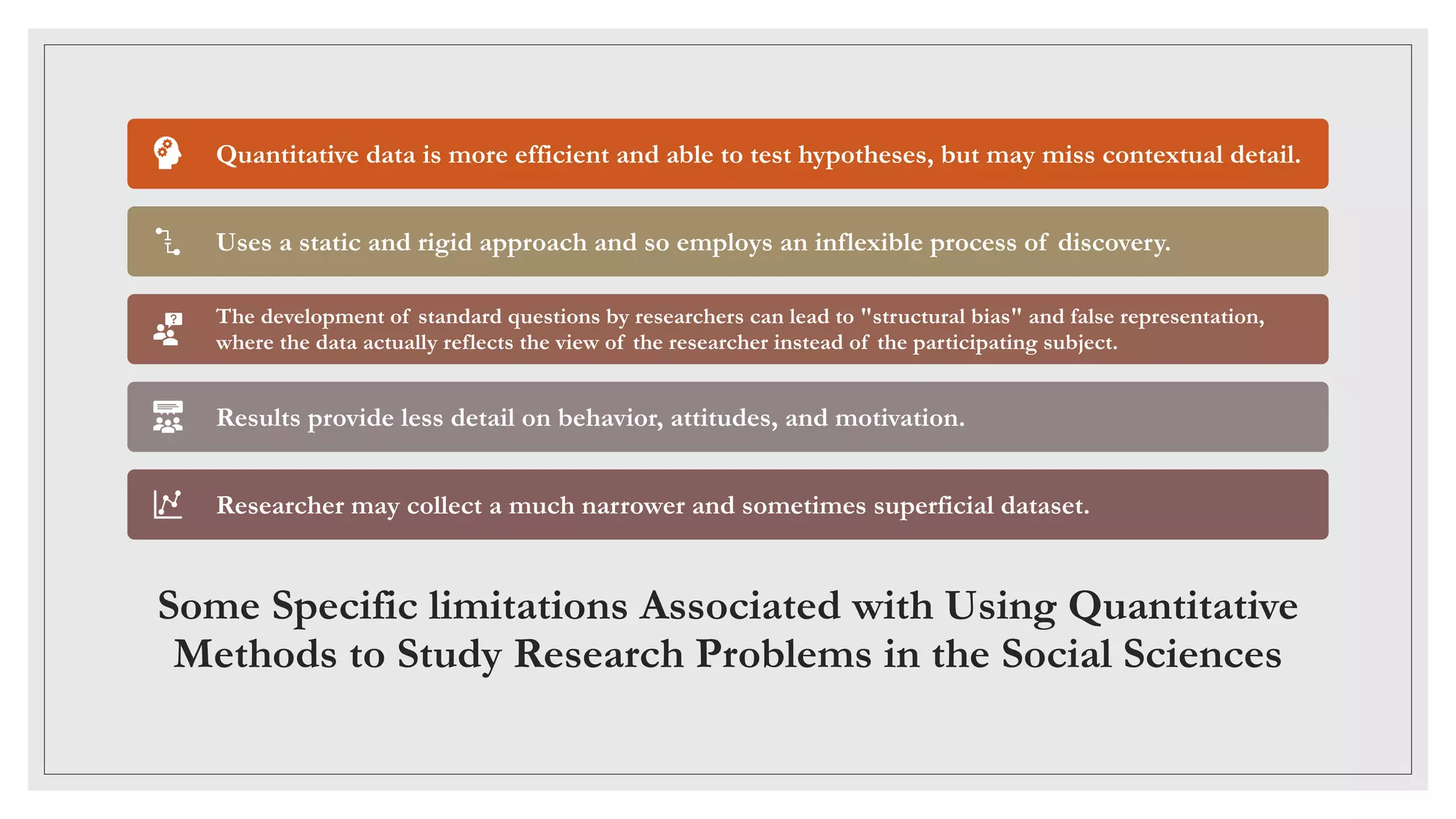This document provides an overview of quantitative research methods. It discusses the nature of quantitative research, which emphasizes objective measurements and statistical analysis of numerical data. It outlines key characteristics such as collecting data using structured instruments from large, representative samples. The document then details the main steps in quantitative research, things to consider when reporting results, basic research designs, and sections to include in reports such as introduction, methodology, results, discussion, and conclusion. It also discusses strengths and limitations of quantitative methods for social science research.



![Characteristics
of
Quantitative
Research
◦ Your goal in conducting quantitative research
study is to determine the relationship between
one thing [an independent variable] and another
[a dependent or outcome variable] within a
population.
◦ Quantitative research designs are
either descriptive [subjects usually measured
once] or experimental [subjects measured
before and after a treatment]. A descriptive
study establishes only associations between
variables; an experimental study establishes
causality.
◦ Quantitative research deals in numbers, logic,
and an objective stance.
◦ Quantitative research focuses on numeric and
unchanging data and detailed, convergent
reasoning rather than divergent reasoning [i.e.,
the generation of a variety of ideas about a
research problem in a spontaneous, free-
flowing manner].](https://image.slidesharecdn.com/quantitativeresearchpresentationsafiahalmurashi-210216075258/75/Quantitative-research-presentation-safiah-almurashi-4-2048.jpg)



![Things to Keep in Mind When Reporting the Results of a Study Using
Quantitative Methods
When using inferential
statistics, provide the
descriptive statistics,
confidence intervals, and
sample sizes for each variable
as well as the value of the
test statistic, its direction, the
degrees of freedom, and the
significance level [report the
actual p value].
Avoid inferring
causality,
particularly in
nonrandomized
designs or
without further
experimentation.
Use tables to
provide exact
values; use figures to
convey global effects.
Keep figures small in
size; include graphic
representations of
confidence intervals
whenever possible.
Choose a minimally
sufficient statistical
procedure; provide a
rationale for its use and
a reference for it.
Specify any computer
programs used.
Always tell the reader
what to look for in
tables and figures.](https://image.slidesharecdn.com/quantitativeresearchpresentationsafiahalmurashi-210216075258/75/Quantitative-research-presentation-safiah-almurashi-8-2048.jpg)
![NOTE: When using pre-existing statistical data gathered
and made available by anyone other than yourself [e.g.,
government agency], you still must report on the methods
that were used to gather the data and describe any missing
data that exists and, if there is any, provide a clear
explanation why the missing data does not undermine the
validity of your final analysis.](https://image.slidesharecdn.com/quantitativeresearchpresentationsafiahalmurashi-210216075258/75/Quantitative-research-presentation-safiah-almurashi-9-2048.jpg)


![Methodology
◦ The methods section of a quantitative study should describe
how each objective of your study will be achieved. Be sure to
provide enough detail to enable the reader can make an
informed assessment of the methods being used to obtain
results associated with the research problem. The methods
section should be presented in the past tense.
◦ Study population and sampling -- where did the data
come from; how robust is it; note where gaps exist or what
was excluded. Note the procedures used for their selection.
◦ Data collection – describe the tools and methods used to
collect information and identify the variables being measured;
describe the methods used to obtain the data; and, note if
the data was pre-existing [i.e., government data] or you
gathered it yourself. If you gathered it yourself, describe what
type of instrument you used and why. Note that no data set
is perfect--describe any limitations in methods of gathering
data.
◦ Data analysis -- describe the procedures for processing and
analyzing the data. If appropriate, describe the specific
instruments of analysis used to study each research objective,
including mathematical techniques and the type of computer
software used to manipulate the data.](https://image.slidesharecdn.com/quantitativeresearchpresentationsafiahalmurashi-210216075258/75/Quantitative-research-presentation-safiah-almurashi-12-2048.jpg)








